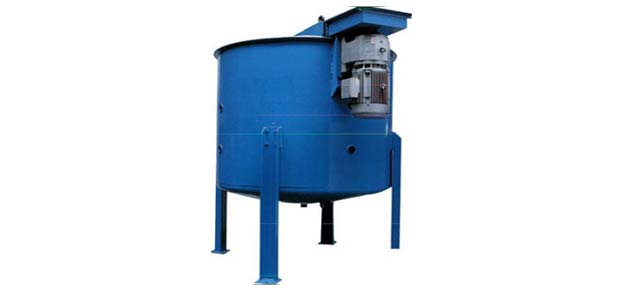Soap saponification section is a set of equipment that are used in the saponification process (the first stage in the soap making process). Saponification can be of two types -
Batch Method
Semi boiled saponification for obtaining medium quality soap is attained by
simple mixing and heating in a crutcher (soap mixer) and is used for
producing small (1 to 5 tonnes) batches household or laundry soap. Any
impurities in the raw materials will be present in the final obtained soap
and there is no wasted discharge to the drain.
Completely boiled saponification for producing high quality soap is done in kettles. This is the most common method of soap making and can be used to make laundry or toilet soap. The completely boiled soap is washed during the process to remove any glycerin or impurities. Batch size is usually 25 to 50 tonnes and 3 to 5 kettles are used in this process. The plant outputs are generally 1 to 5 tonnes per hour. The technique can be used to produce soap of international quality standards. Some wastes may require to be discharged to the drain if glycerin is not recovered from these wastes (called lye).

Continuous Process
Continuous saponification process is suitable for producing different
grades of soap of different quality standards. This system is not suitable
to manufacture soaps at the production rate of less than 50 tonnes of soap
per day. The system can be designed to achieve soap production rates in
excess of 200 tonnes per day.
In the continuous process technique, raw materials are accurately metered using a special pump to the saponification reactor. Following the reaction, the clean soap is separated from the by-product of the reaction (rich in glycerin). The separation occurs in two main stages, at first in the rotating disk column, and secondly through centrifuge separation. The clean soap can be pumped to the storage, or directly to the vacuum spray drying section.
Because of the high value of glycerin, the plants generally come with a glycerin recovery section to purify and retain the glycerin
Saponification Pan
Saponification pan is a hemispherical vessel, the bottom of which is made of thick steel
plates. The bottom of the pan is heated using firewood or by means of diesel
burners. The boiling mixture is stirred with the help of crutches and due to
the direct heating, the soap mixture requires to be continuously stirred for
homogenous mixing. Boiling is carried out till the complete neutralization
is achieved, after which the soap is taken to drying section for further
process.
It is important to take care to ensure that soap does not stick to the bottom as if it sticks it may get burnt. The technique is a manual process and needs continuous stirring.
Saponification Vessel
Saponification vessel is a cylindrical vessel with a cone shaped bottom. At
the inner side, the vessel has circular coils that have holes and steam is
injected from these holes. In the case, soap is obtained by full boiled
method, the layers of soap and lye separates out. When soap is obtained by
full boiled process layers of soap and spent lye separates out. The spent
lye goes to the bottom and the soap to the top. The spent lye is drained
from the valve at the bottom of vessel and as the lye is drained, soap
begins coming out of the valve. As the heating of soap mixture is done with
steam there is no chance of soap getting burned. The vessel can be used to
obtain quality soap.
Continuous Vacuum Spray Drying Process
In the continuous vacuum spray drying process technique, the clear soap
from saponification section is taken to the soap feed tank after being
filtered. After this the soap is sprayed into the spray drier where the
desired vacuum can be maintained using a vacuum system. As the soap is
flashed from the soap nozzles into the vacuum chamber, vacuum is removed.
The soap sticking to the spray drier walls can be scrapped with the help of
a scrapper that can be adjusted. The dried soap falls into the duplex vacuum
plodder and the duplex soap descends from the top noodle plodder. Vacuum is
sustained within the chamber that connects the plodders and the soap comes
out of the plodder in the bar form. These bars are then cut into desired
forms and stamped.
Good laundry bar soap can be obtained using the continuous vacuum drying process. For toilet soap, a duplex plodder fitted with noodle plate is used. As the soap comes out rotating knives cuts the soap noodles. The soap noodles produced and obtained from the stage are further finished to get high quality toilet soap.

If you have decided to make soap at home, you will need soap making supplies in the form of raw materials, soap making equipment & tools ...
Read More
Someone has rightly said that clothes are not just clothes. They form an integral part of a person's personality and tell a lot about their nature and...
Read MoreCleansing products play an important role in the daily lives of people.
Both soaps and detergents are cleansing products that we frequently use in our
Soap is designed as a product to be used once and then flushed down the drain...